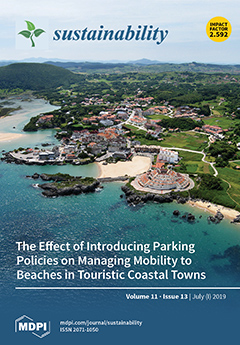This study was carried out in the southern zone of Tigray to identify and characterize traditional common agroforestry practices and understand the existing knowledge of farm households on the management of trees under different agroforestry in different agroecologies. We conducted reconnaissance and diagnostic surveys by systematically and randomly selecting 147 farming households in the three agroecologies of the study area. A logit regression model was employed to determine how these factors influence farmers’ adoption decision. The findings indicate that a majority of the households (46.3%) were engaged in homestead agroforestry practices (AFP), followed by live fence (25.9%) and farmland or parkland (15%) agroforestry practices. The study identified
Carica papaya, Malus domestic, Persea americana, Mangifera indica, Ziziphus spina-christi, and
Balanites aegyptiaca as the most dominant fruit tree species found in the home garden agroforestry. In total, 68% of the households had some of these fruit trees around their home gardens. We also established the three most dominant agricultural production systems as: i) Agricultural production system, composed of fruit tree + cereal crops +
Ziziphus spina-christi +
Balanites aegyptiaca and/or
acacia species; ii) agricultural production system, consisting of cash crops, like
Coffee arabica and
Catha edulies + fruit trees +
Cordia africana +
Balanites aegyptiaca and/or
acacia species; and iii) agricultural production, composed of fruit trees + vegetables within a boundary of
Sesbania sesban and other
acacia species in the modern irrigated land. Furthermore, 90.16% of the households in the highlands reported a shortage of farmland for planting trees as the main constraint. About 34.44% farmers reported using leaves of
Cordia africana, Balanites aegyptiaca, pods of
acacia species, and crop residue as the main source of animal fodder. In total, 86.4% of the households also recognized the importance of multipurpose trees for soil fertility enhancement, control of runoff, microclimate amelioration, environmental protection, and dry season animal fodder. According to the logit model analysis, sex, family size, educational level, and landholding significantly (
p < 0.05) influence the household’s role in the adoption of agroforestry practices. Based on these findings, farmers used different adaptation strategies, such as planting of multi-purpose trees (34.7%), conservation tillage to minimize both erosion and runoff potentials as soil conservation strategies (27.2%), varying planting dates, use of drought tolerant crop varieties (16.3%), and others based on farmers’ indigenous knowledge passed down from generation to generation. We conclude that agroforestry practices are important components of farming systems in Tigray, resulting in diversified products and ecological benefits that improve socio-ecological resilience. Therefore, we recommend that agroforestry practices are mainstreamed into development plans, especially in agriculture.
Full article





